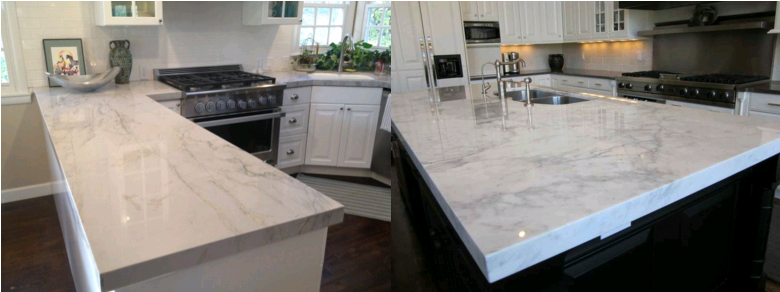Though quartz and quartzite countertops may pop-up side-by-side in your search results due to their rising popularity, they are two separate and equally distinctive materials despite their similarities in name and appearance. Each appealing in its own way, uncovering these differences can help you discover if either of these materials offer the ideal kitchen countertop solution for you.

Distinctive advantages
Quartzite slabs, like granite, are hard and durable, possessing the ability to withstand heat. Also like granite, they require periodic sealing every year or two. Quartz slabs, on the other hand are the least porous, though not heat-resistant over 300 degrees Fahrenheit, require no sealing.
Diverse beginnings
Quartzite is naturally formed from quartz-rich sandstone, extracted, and quarried to form finished slabs for countertops and tiles. Quartz slabs, though also comprised of around 94% of the raw material quartz, are synthetically engineered with the addition of resins and pigments pressed under immense pressure to form a solid surface countertop.
Price ponderings
Both quart and quartzite counters are on par with higher-end stone surface options like granite and marble, so if you’re looking to price as the determining factor for which material will grace your kitchen design, you’ll have to look elsewhere for the tie-breaker.
Complex color creations
Many natural quartzite slabs offer the swirling white and grey coloring popular in today’s kitchen designs, however rarer varieties offer shades of golds, browns, blues, greens, and even shades of red. Quartz, due to its manmade origins, offers uniform colors and patterns in nearly every color in the rainbow, including solids and lookalikes of other natural surfaces – including quartzite.
Tsianfan industry has a team dedicated to providing you with the most cost effective solutions for design and manufacturing stone sample boards,stone sample case and other stone sample packing products.More info ,please click our website:stonepackingcase.com
